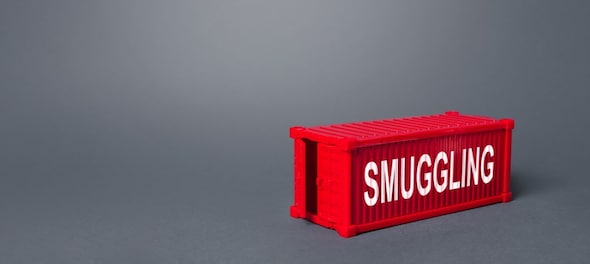
Glamorisation of crime makes good stories. Be it in books or movies. And if the crime is smuggling it is even more so. In movies, add some mirch masala in the form of a pretty village belle, good music and for good measure also throw in a socialist element, you have a sure winner in your hands. ‘Pushpa ‘, a multilingual super-hit movie with a twist, running in theatres and on OTT, is the latest.
That smuggling and counterfeit activities are detrimental to the economy is well known. There are very few studies however available to establish just how bad these activities are. One major challenge has always been that since smuggling is a clandestine activity, establishing the quantum of smuggling is difficult.
However, in a study commissioned by FICCI’s think tank, Smuggling Committee Against Smuggling and Counterfeit Activities Destroying the Economy, (CASCADE) attempts have been made to establish the quantum in a few select commodities. This has been done on the basis of the domestic demand, domestic manufacture, licit imports and the gap between these.
Also Read
This is one of the few studies on the subject. Obviously, a study of this nature necessarily has to make certain assumptions. The study is still a very brave attempt to fill a gap in this literature.
What the Report does emphatically point out is that smuggling hurts the economy in multifarious ways. It results in loss of revenue and hurts the legitimate industries. It results in the loss of jobs and impinges innovation and investment.
Prof. Arun Kumar, the leading economist, has estimated in his book (‘Understanding the Black Economy and Black Money in India’ published by Aleph Book Company 2017) that India’s black economy is about 62 percent of GDP. He suggests that at 2016-17 prices, about Rs 93 lakh crore of black money (or USD 1.4 trillion) has been generated. Prof. Kumar estimates that consequently, the country’s economy has been losing on an average 5 percent growth since the mid-1970s.
Of course, to lay the blame on smuggling for all the black money generated in the country will not be correct. Black money has very many other contributors. Proceeds of smuggling too contributes. Smuggling with its perceived risks makes a good story.
The Indian Customs Act defines smuggling ‘in relation to any goods, means any act or omission which would render such goods liable to confiscation'. The definition is wide and includes within its ambit not just evasion of tariffs, but also restrictions against import or export, which have been imposed for the time being.
When one talks of smuggling invariably it is in the context of goods coming into the country. Illicit import is certainly more prevalent. In the context of India, the incessant demand for gold makes it a commodity favoured by smugglers.
Smuggling ultimately is all about demand and supply. It is about controls that are put in place which ironically make the supply even more challenging and increases costs. It makes smuggling more profitable. Thus, smuggling can also be of illicit export to meet demand in other countries. This is particularly true of items like Red Sanders wood, star tortoise, or pangolin scales. All these fall under the Convention on International Trade of Endangered Species of Wild Fauna and Flora (CITES).
CITES which came into force in 1976 was driven by concerns of rampant killing and felling of fauna and flora. The idea of CITES, was to create awareness, ensure global cooperation and thwart through coordinated response, attempts to smuggle. India became a signatory in 1976 to the Convention.
Red Sanders (Pterocarpus Santalinus) wood is a species endemic to the tropical dry deciduous forests in the South-East part of the Indian peninsula. Its main habitat is the Palakonda and Sheshachalam hill ranges of Cuddapah-Chittoor Districts of Andhra Pradesh. The Red Sanders Forest is spread over an area of 5100 kms. It has little domestic demand but has a market in South East Asian countries and China where it is traditionally given as dowry.
Given the indiscriminate felling of Red Sanders, it was included in Appendix II of CITES in 1995. (Appendix II refers to those species which are not endangered but could become endangered if trade in them is not controlled and monitored)
The twist in the movie ‘Pushpa, ‘is that the hero is a Red Sanders smuggler. This must be a first- and unlike the normal movie smuggler who traditionally is deep into only ’sona,’ the yellow metal. The movie makes it explicit that there is lots of money in the smuggling of this wood. It shows whole swathes of forests being cut and carted in vehicles. And the hero is projected with a swagger, an aura as if urging everybody to join this lucrative, criminal activity.
This brings us to the point that awareness campaigns are needed to educate the public at large. Awareness campaigns that enlighten the public that smuggling means goods moving in or out of the country in violation of the legal provisions. Campaigns to educate the public that purchasing smuggled goods is detrimental to the economy and encourages smugglers.
Nothing can strengthen the hands of the enforcement officials more than consumers not purchasing smuggled goods. If demand dies, smuggling syndicates would have to find new jobs.
— Najib Shah is the former chairman of the Central Board of Indirect Taxes & Customs. The views expressed are personal.
Read his other columns here
(Edited by : Priyanka Deshpande)
Check out our in-depth Market Coverage, Business News & get real-time Stock Market Updates on CNBC-TV18. Also, Watch our channels CNBC-TV18, CNBC Awaaz and CNBC Bajar Live on-the-go!


PM Modi visits Ram Mandir for first time since 'Pran Pratishtha', offers prayers before roadshow
May 5, 2024 8:59 PM
Visiting temples, obliging selfie requests, jabbing rivals – Kangana Ranaut is wooing voters on campaign trail
May 5, 2024 8:23 PM

